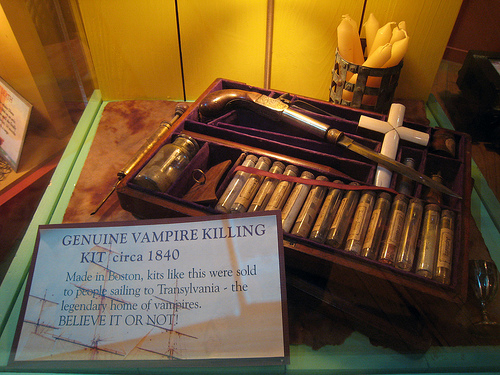The New England vampire plague
1880s vampire panic swept New England
In 1990 in a small Connecticut town, some kids playing in a gravel mine discovered the remains of an old cemetery. Archaeologists were called in to excavate, catalog, and move the remains. Most of the bodies which had been buried in the cemetery were what you would expect, until the archaeologists went to work on a coffin named Burial Number 4.
According to the forensic evidence they found, Burial Number 4 had been dug up about five years after he had died, and his skeleton had been rearranged. His feet were still where they had been, but he had been beheaded, and his skull and thighbones set atop his rib cage like a pirate flag.
The remains were named "J.B." after the initials picked out in brass tacks on his coffin lid. He had been in his 50s when he died, circa 1830s. The timing of his (first) exhumation labeled him as one of the "Jewett City Vampires," part of a particularly strange chapter in American history.
When most people think of the paranormal and historic New England, they think of the Salem witch trials. But several hundred years after the witch panic, New England was gripped by a vampire panic. People became convinced that the dead were digging themselves out of their coffins at night and roaming the countryside to feed off the living.
One historian has documented 80 exhumations, most of which happened in New England in the 1800s. J.B.'s grave and remains are the most complete set of surviving physical evidence from the vampire panics.
An interesting fact about these outbreaks of vampire panic is that they inevitably coincide with tuberculosis outbreaks. (In fact, J.B. was found to have suffered from TB.) An early folkloric belief was that the first person in a family to catch tuberculosis, known also as "consumption," was a vampire, who was responsible for secretly feeding off (and infecting) their other family members. It was one way to explain the spread of the disease, at a time before people knew how disease worked. And the tuberculosis patient's blood-spotted handkerchief was evocative of vampirism.
In some cases, the village might blame a dead person for bringing the curse of TB to their town. These corpses were dug up and dealt with, whether by turning them upside down, or by (as happened to J.B.) decapitating them, removing their heart, and burning it in a public ceremony.
